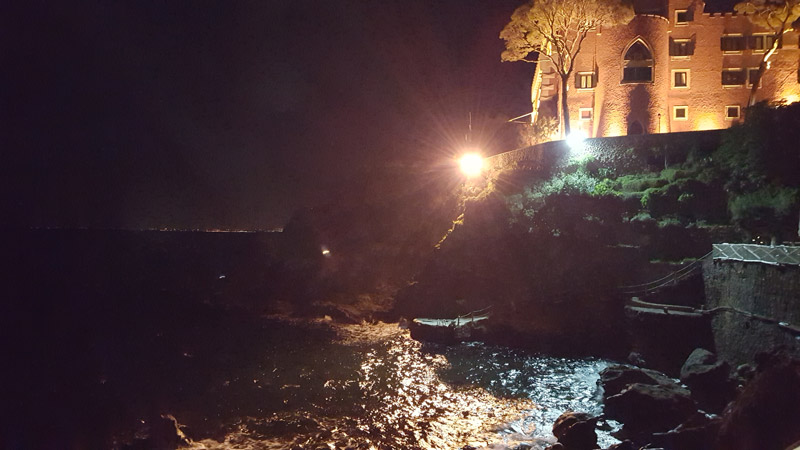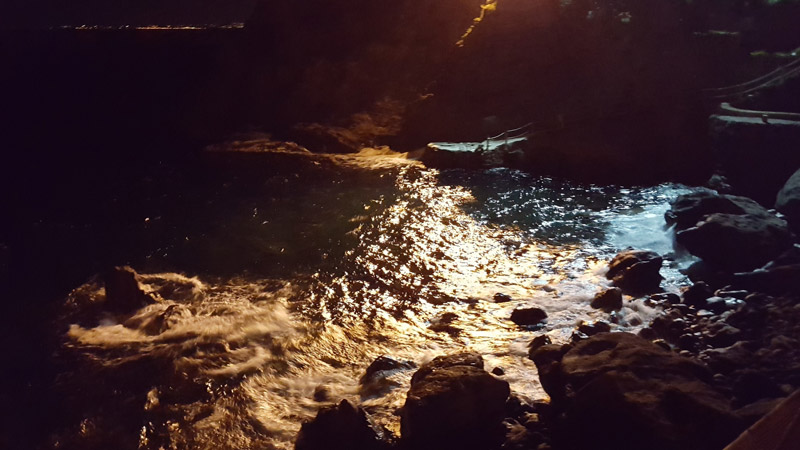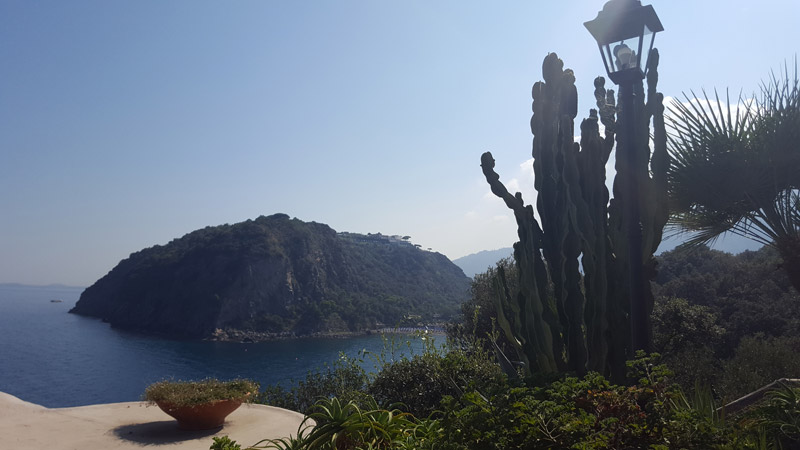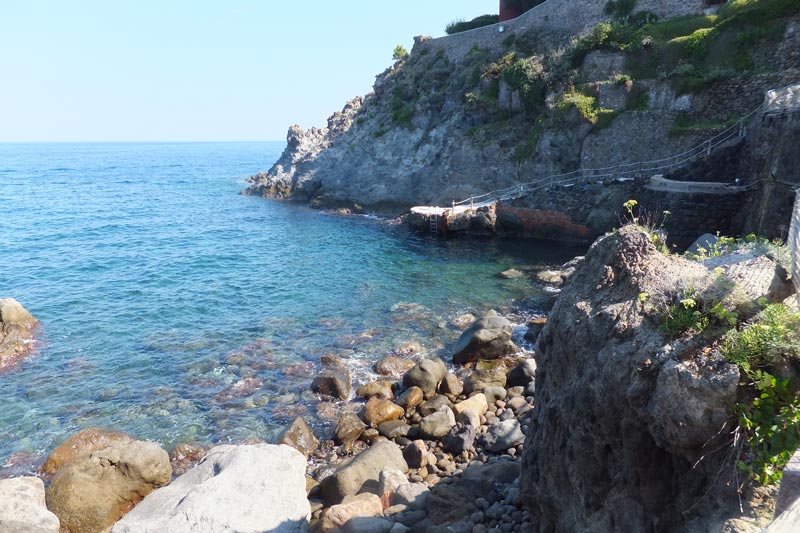A dinghy waits at the makeshift jetty, manned by two sailors. One helps you clamber aboard as the other, the pilot, stares out to sea.


The dinghy sets off and you watch the pilot pick a course through jutting rocks. As you leave the cove, the wind becomes stronger, the sea rougher. A motor torpedo boat waits in open water, and you reach it quickly and climb aboard. For brief moments, you look towards the mainland. There are no lights along the Bay of Gaeta but you see a dark outline. The boat, you know, is sailing north.
Soon, the sailor taps your shoulder and leads you back to the dinghy, where the pilot is waiting. The three of you set off and, after the motor torpedo boat, the dinghy feels small and exposed. Anxious, you make out the shore as the pilot stares towards the coast, finding landmarks, you hope.
You have almost reached dry land and the dinghy can go no further. ‘Good luck,’ the sailor murmurs. He helps you out and hands you your pack of equipment. You scramble over stones then up a steep slope. Your feet are wet and slip on the rocks, but the terrain ahead is flat. You look back and make out the dinghy. A hand waves: the sailor, you assume.
You are alone, in German-held territory, south of Anzio, around fifty miles from Rome. You will make the journey on foot, dodging German patrols.
On 8 September 1943, an armistice was announced between Italy and the Anglo-American Allies. In the next days, German forces moved to control those parts of Italy not in Allied hands.
Italy was split in two. The Allies were in the south, quickly joined by Italy’s King and Prime Minister. To their north were the Germans, who soon installed Mussolini as puppet leader of a fascist Italian Republic.
Italian servicemen who fell into German hands had to fight alongside the Germans or face arrest. Many escaped instead to become partisans or resistance members, and some joined the Allies.
During the autumn of 1943, British and American intelligence services deployed Italian recruits into German-occupied territory, including Rome. Their tasks included intelligence, wireless transmission and bomb-making, as well as helping servicemen and fugitives to safety.

There are some accounts of British intelligence services sending recruits back to Rome via Ischia, the route taken by Carlo in Shadow Song. These recruits were reportedly trained in the north-west of the island at Castello Mezzatorre, embarking from a small cove below. They travelled when there was no moon, a period of around fourteen days.
Could anyone enter German-occupied Rome? Many partisans and resistance members found ways in and out, although they had to be careful to avoid capture. Any ex-serviceman who arrived openly in Rome faced arrest, deportation or execution, unless he had a good reason to be there. In Shadow Song, Carlo’s wound and qualification as a doctor gave him a rare opportunity to resume civilian life … as long as the German occupiers believed his story.




